Sea Sprouts¶
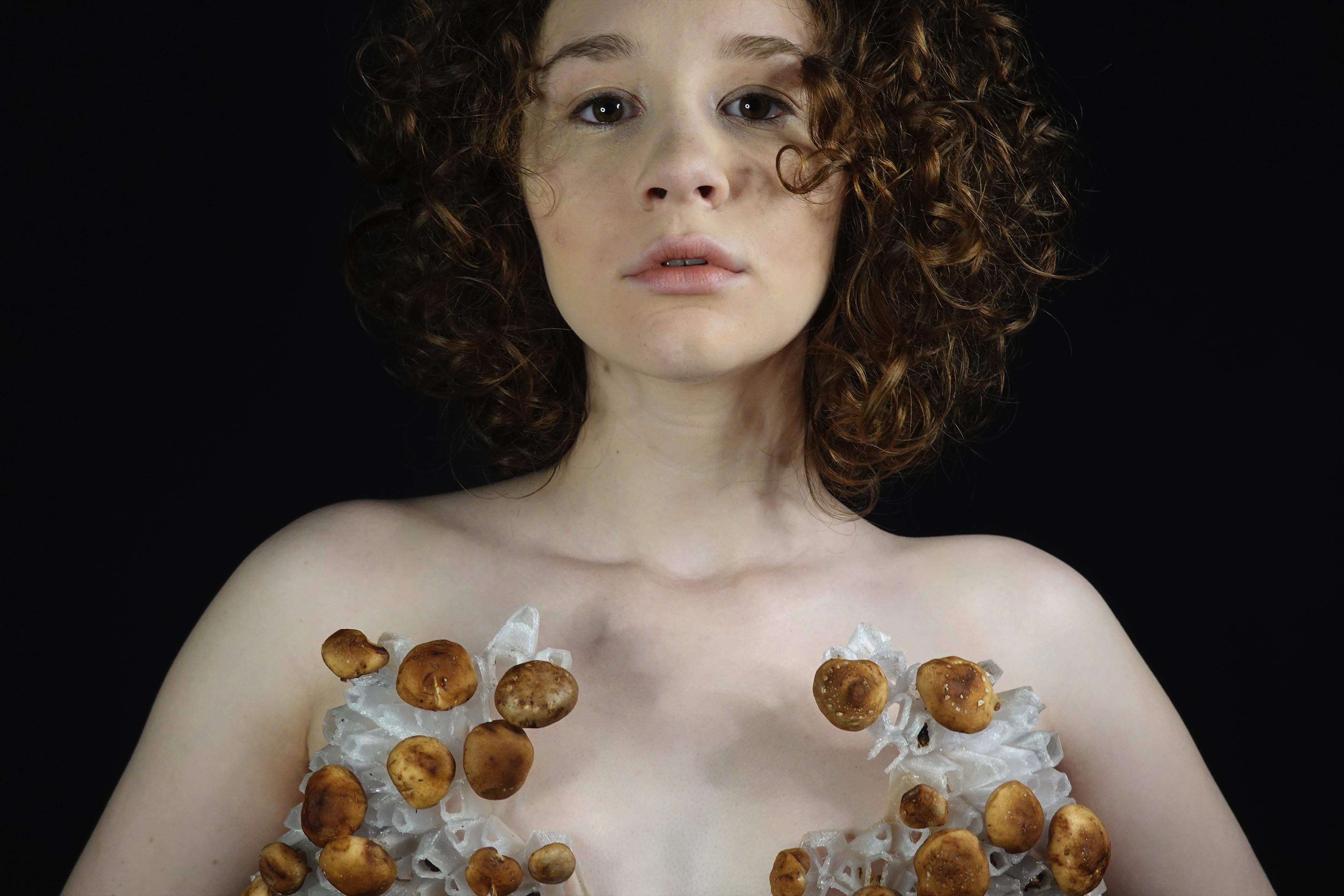
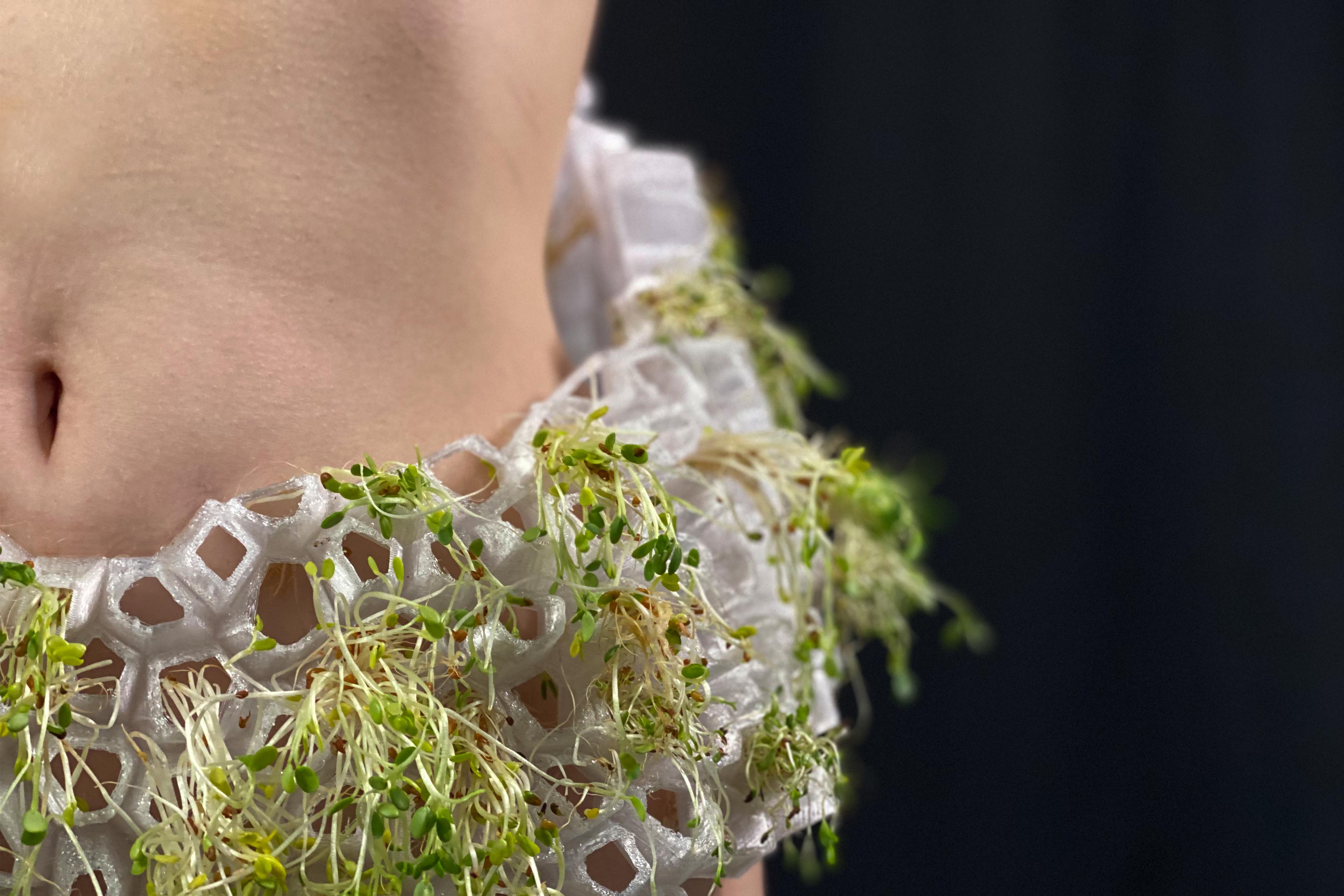
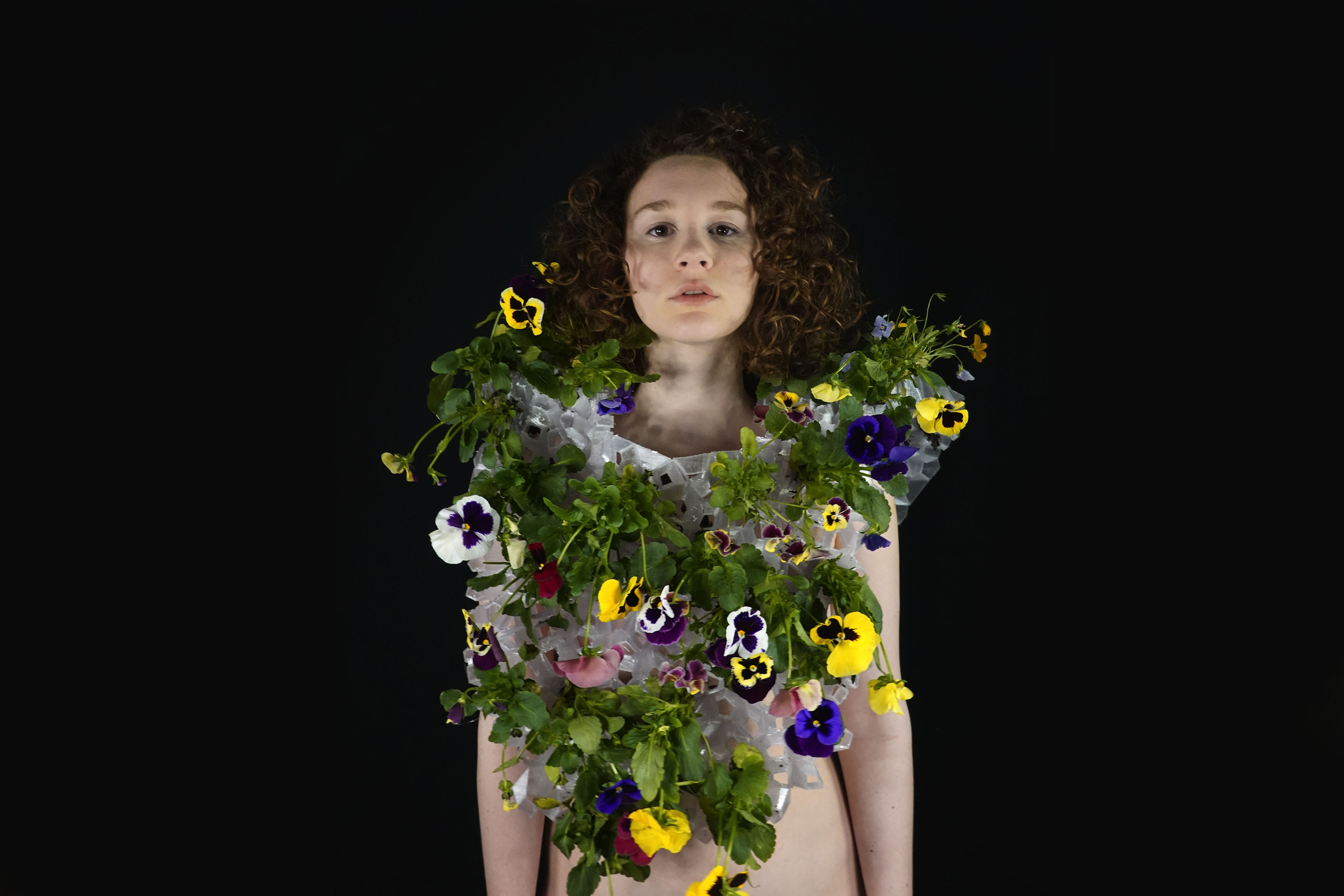
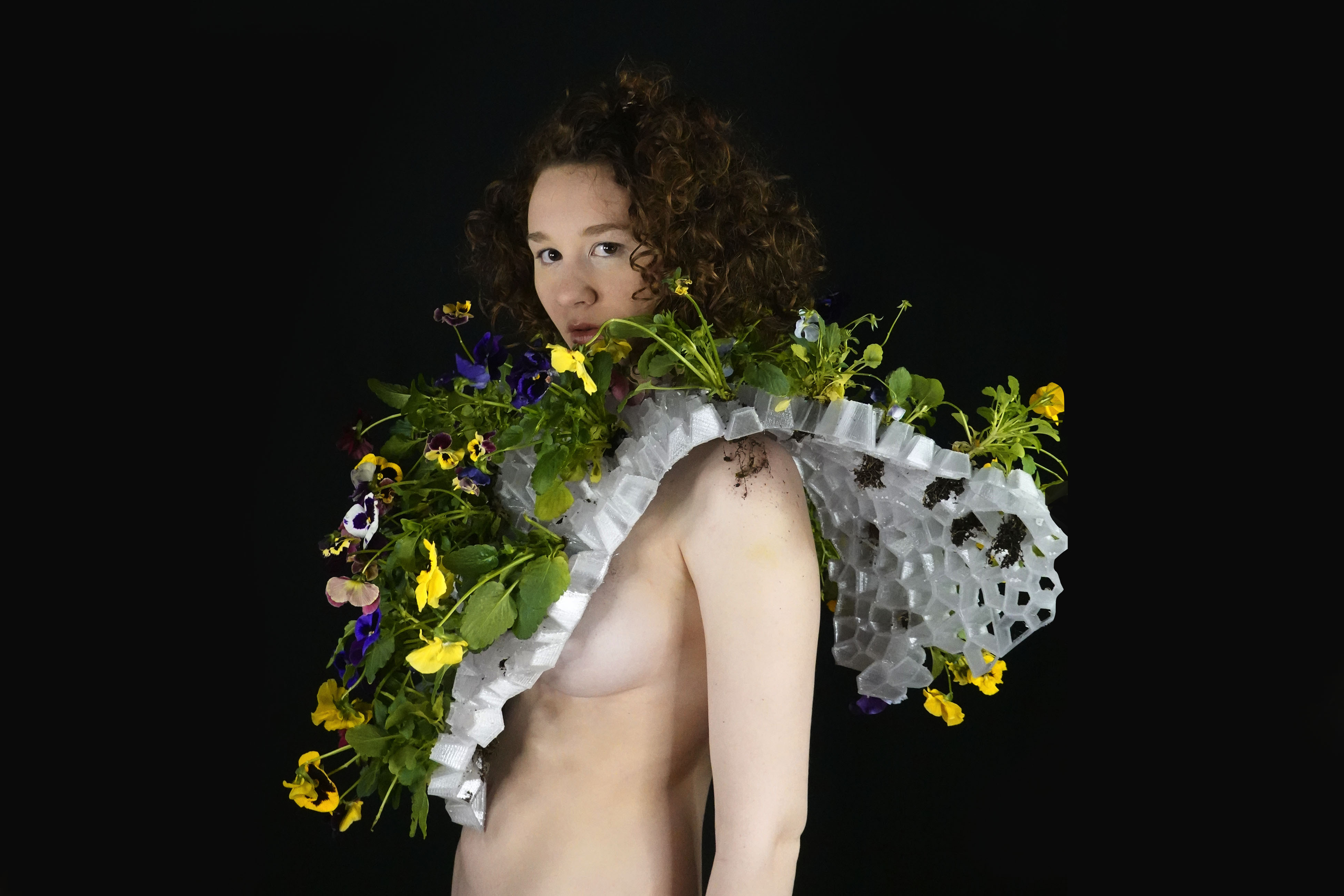
Sea Sprouts imagines how Embryophyte plants would grow in structures that can only be made in the sea.
I simulated barnacle growth in an unlikely place – the body. I used Rhino and Grasshopper to create a definition that mirrors barnacle growth, utilizing the Voronoi function to create the barnacle patterns and shapes.
Once each piece was computationally grown, they were printed out on a Gigabot printer. Each piece took over a week to print, adding another layer of growth to the project.
After removing the supports, each Sea Sprout was prepared to collaborate on. In one sea sprout, mushrooms were planted to grow from each barnacle. These mushrooms took 2 weeks to grow and settle in the barnacle structure.
In another Sea Sprout, alfalfa sprouts grew in the nooks and crannies. The alfalfa sprouts were quick, taking only a week to create a natural fur.
Each 3-D printed sea sprout represents a moment in time, as the algorithms and natural components are constantly evolving and changing.
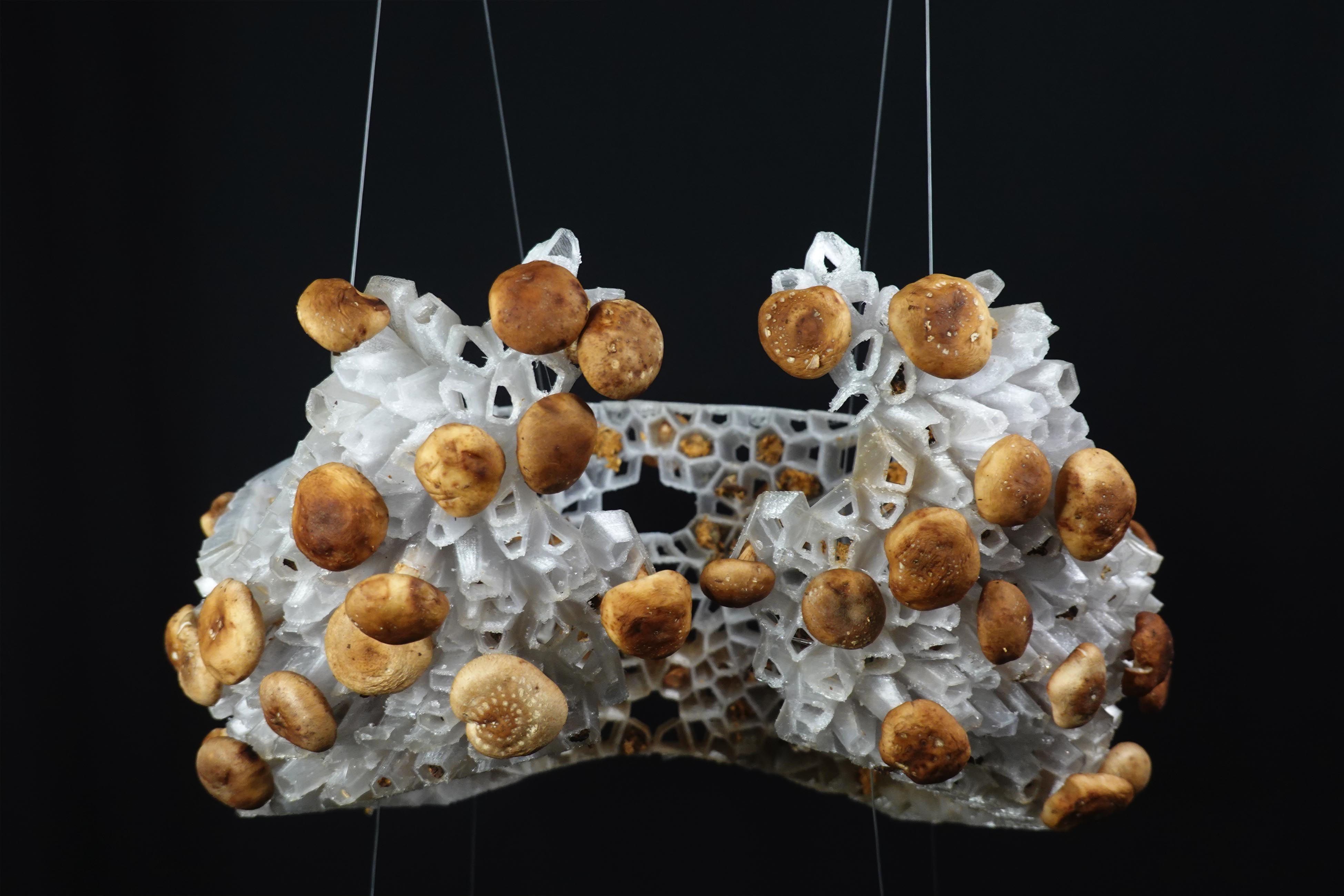
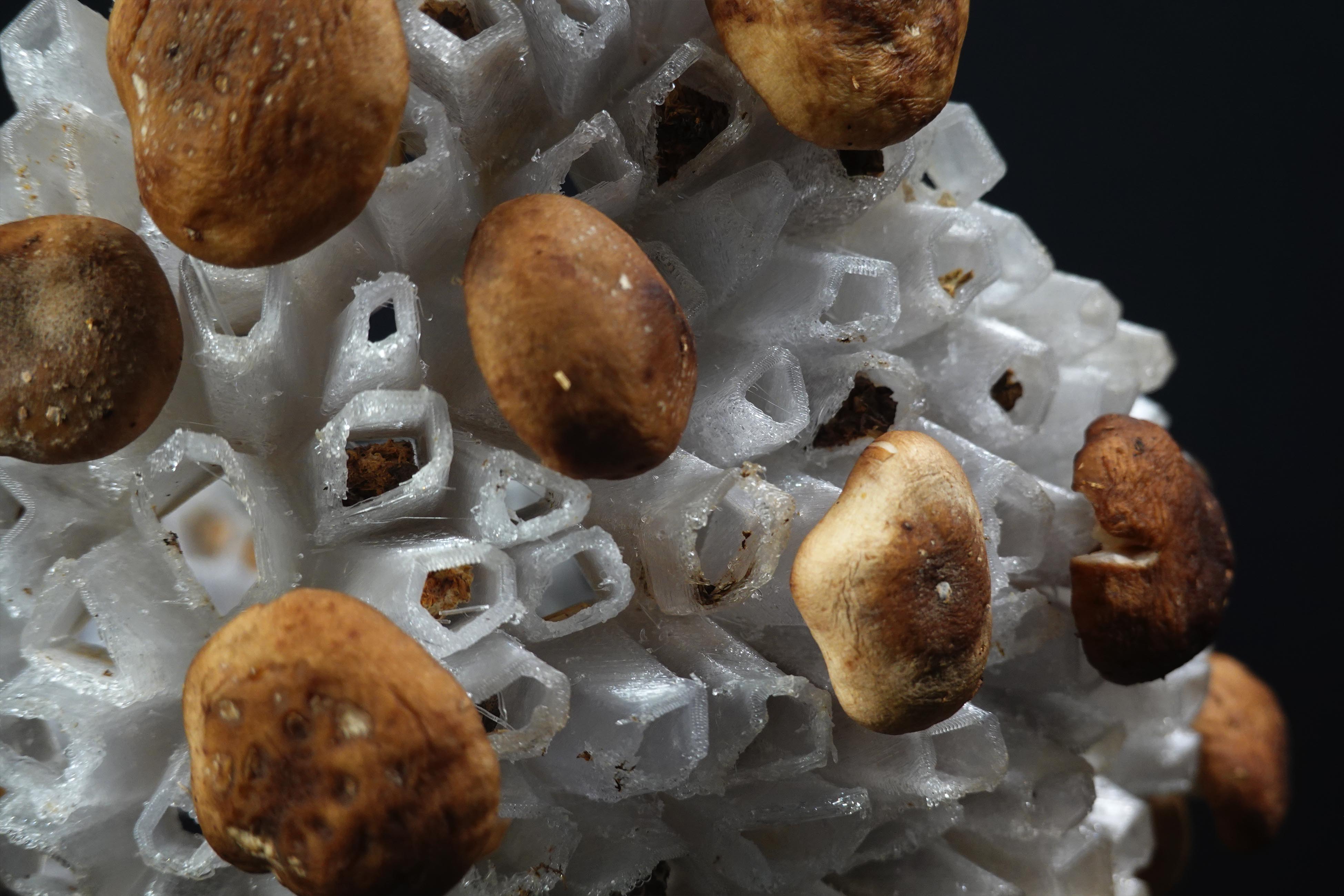
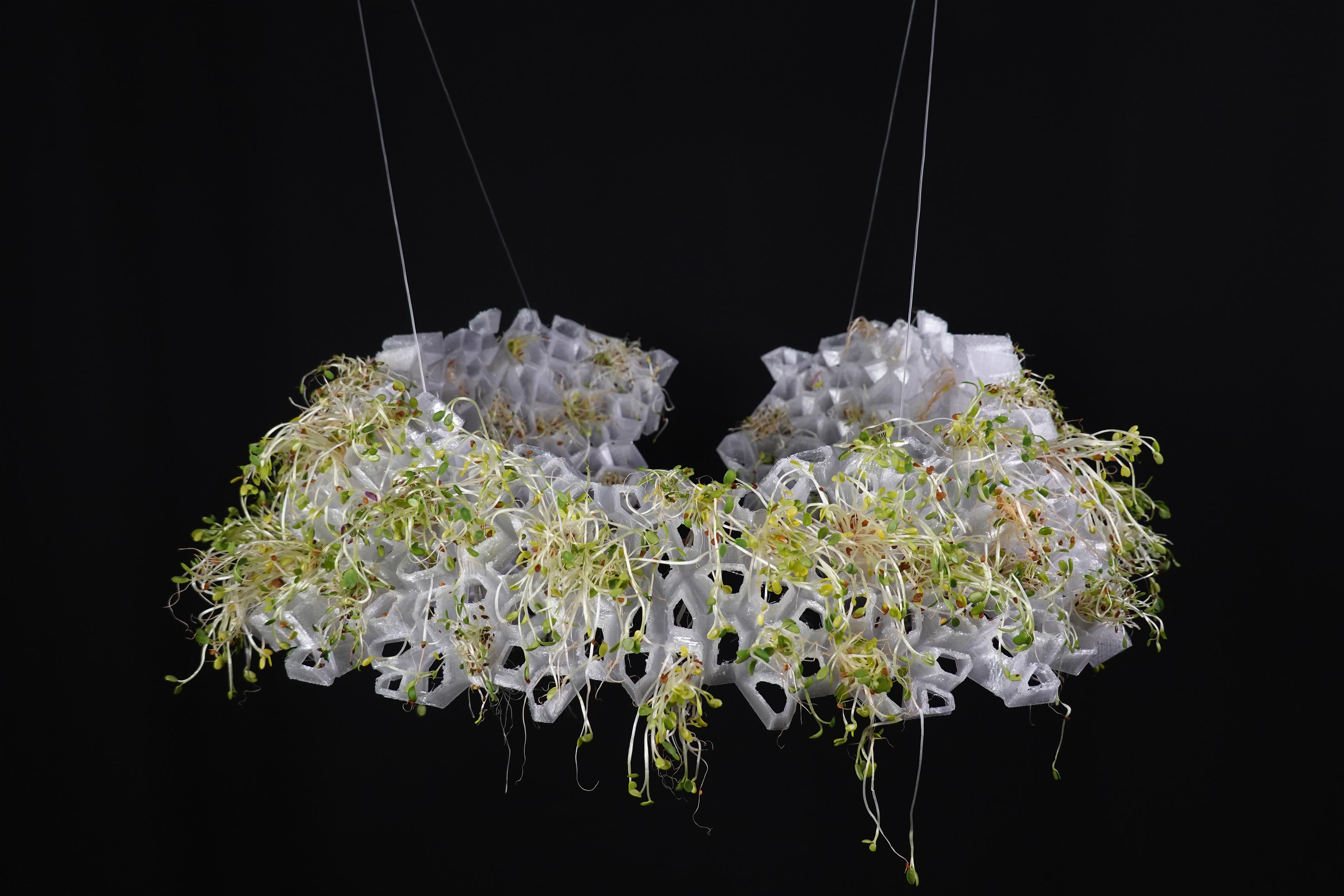

Process¶
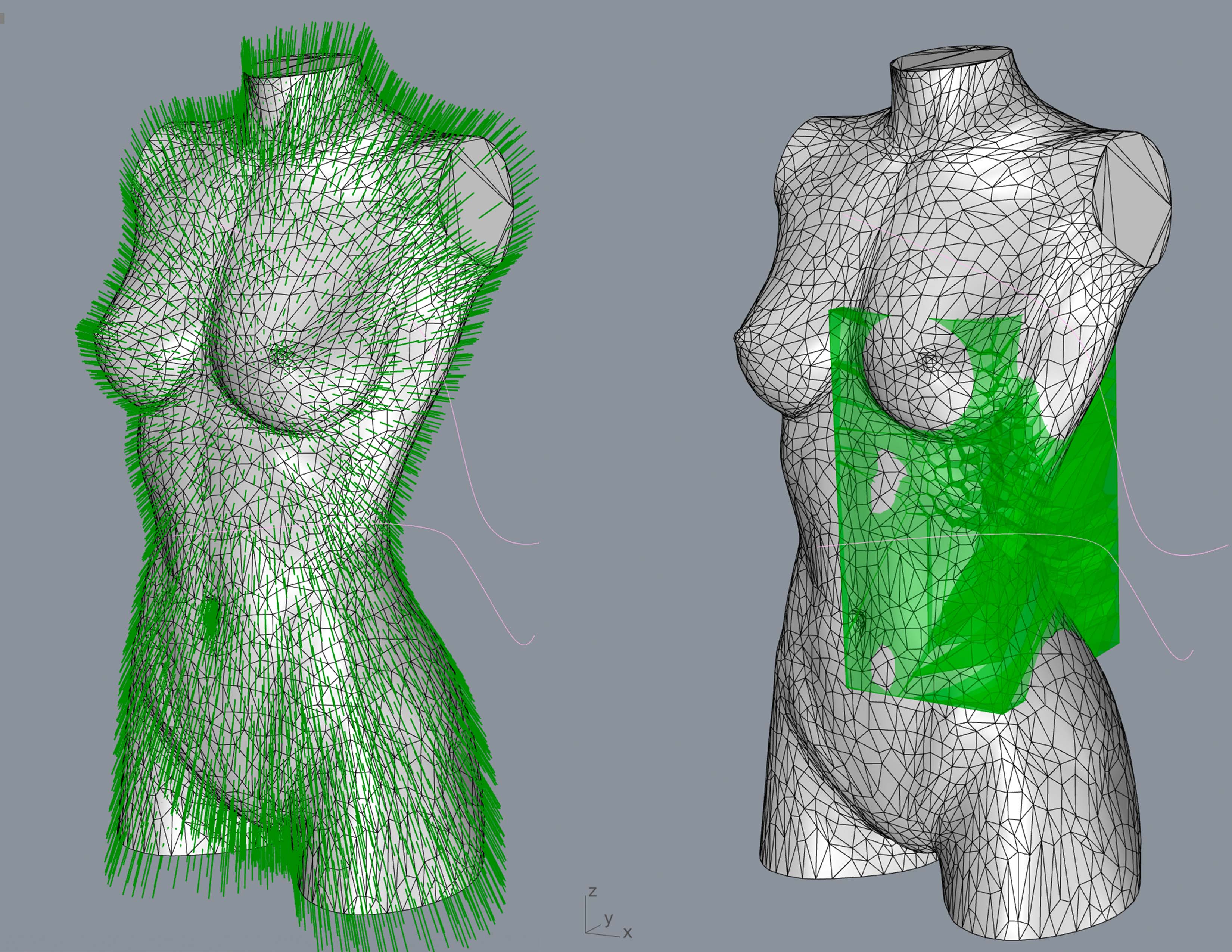
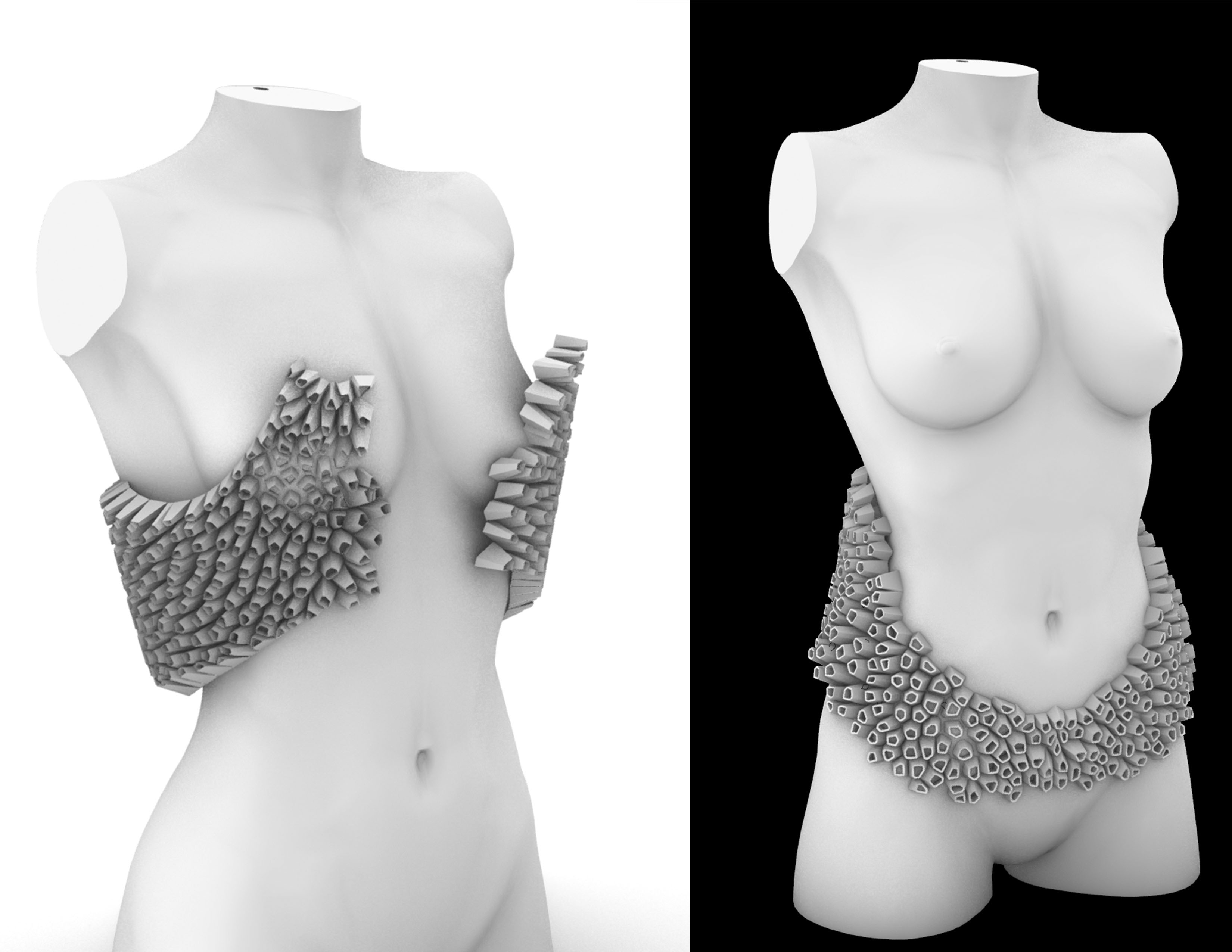
I am fascinated with biomorphic computational design and my goal is to simulate how barnacles would grow off of the human body - if they could. I created a Grasshopper Definition that models barnacles growing on the human form.

I prototyped many 3D printed samples to understand the properties of barnacles in the context of machines. After prototyping a dozen test prints, I came to the final form and proportions I was happy with. From there I printed each piece out on a Gigabot 3D printer.

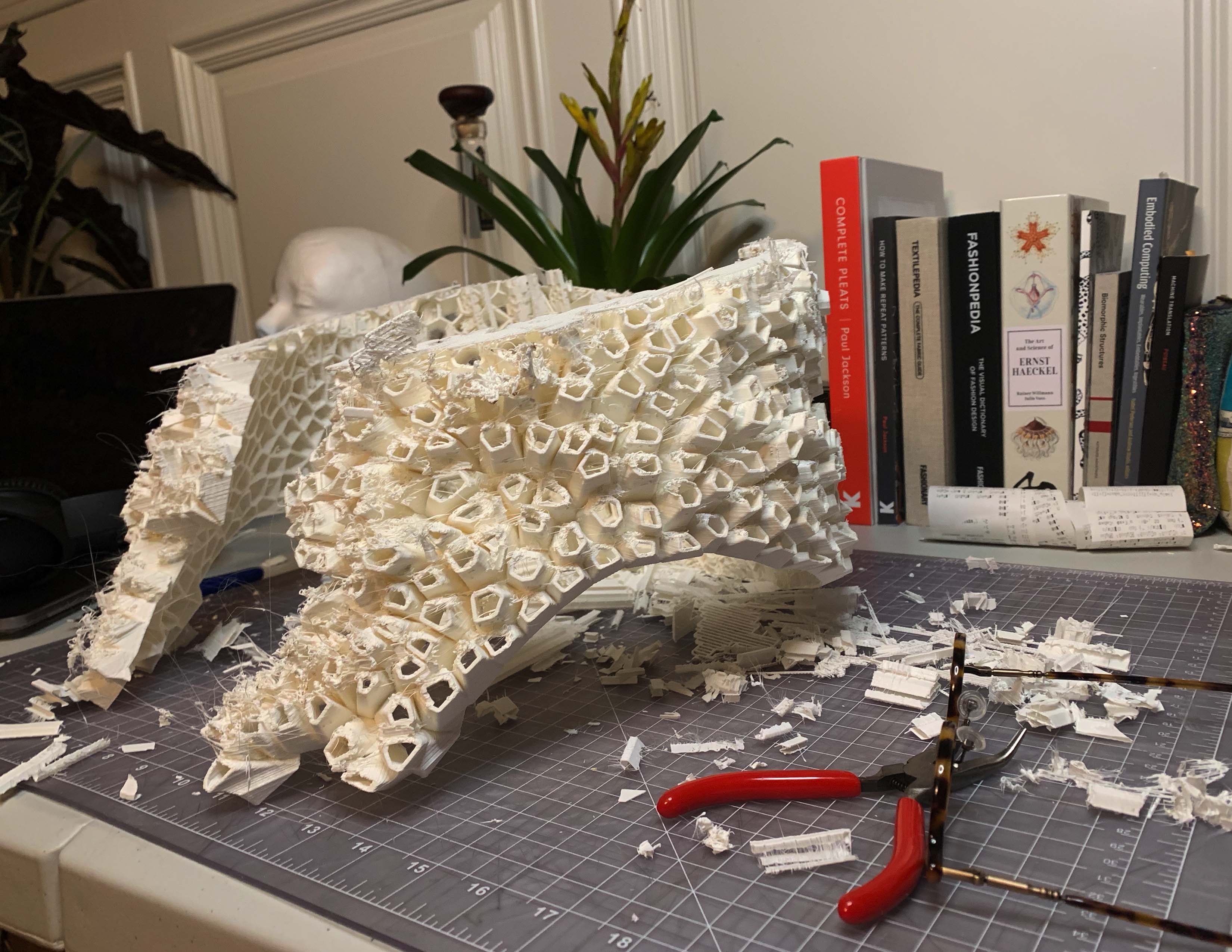

The biomorphic computational design is only one facet of sea sprouts. After removing the support material on each print, I paired the pieces with their plant collaborators.
I first paired sea sprouts with mycelium. After growing the mycelium on its own for two weeks, I broke up the mycelium and merged it with the barnacle structures. I then left the mycelium on its own to grow for a few weeks. Unfortunately, I didn’t have a humid enough environment for the mycelium to grow and it dried out.

For my next try, I got a head start growing the mushrooms by using a shiitake mushroom growing kit that was already at the sporing phase. Copying the same process as before, I merged the mycelium and the mushrooms. This time around, I sprayed the 5-7 times a day with water over the course of 14 days. This worked amazingly well, and created dozens of mushrooms.
My next pairing was the barnacle structure with alfalfa sprouts. Alfalfa sprouts do not require dirt to grow, which made them an excellent choice for paring. I soaked the alfalfa sprouts in a Tupperware container overnight, and then left them in the sun to grow. I continued to soak the alfalfa sprouts each day. Once they initiated growth, I combined them with the barnacle structure and left the structure in the sun. I was pleased to see the sprouts grow through the structures and create a beautiful fur.